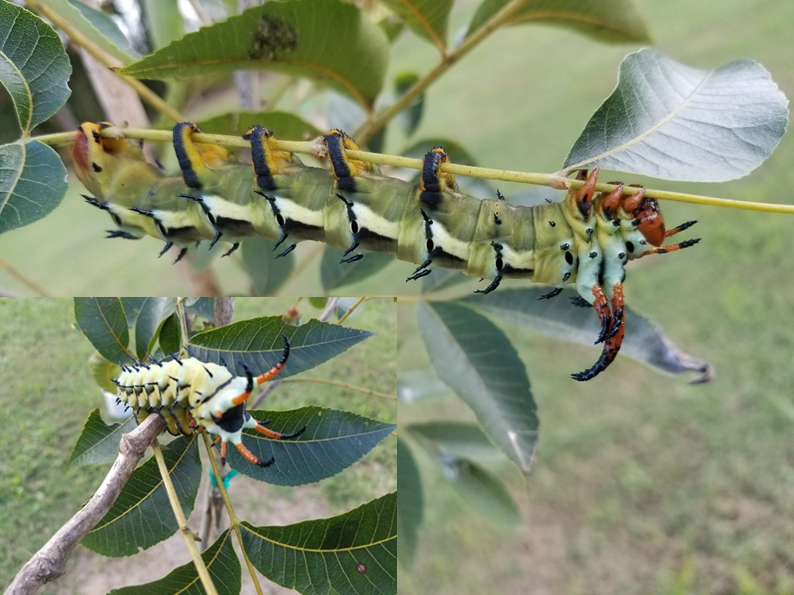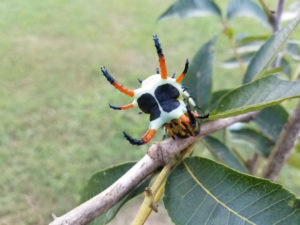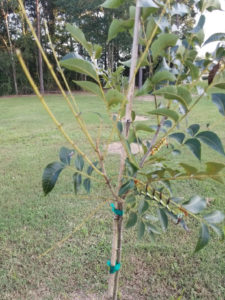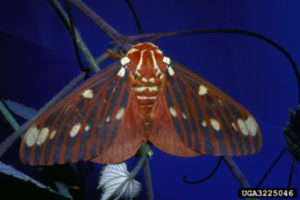
Oct 7, 2022LSU Extension agent spots uncommon hickory horned devil caterpillar in pecan
Pecans are one of our native nuts in the United States, which have both positive and negative implications. On the positive, we know that they are well adapted to a wide range of our growing environments, and we have a plethora of wild genetic diversity to make selections from. On the negative, there are hosts of pathogens that have adapted to prey on pecans and related species in their native range that we have the headache of having to manage.
While we are seldom excited to find insects that are not beneficial in our pecan orchards, occasionally you can make an interesting discovery even if it might be slightly destructive. When I was walking through a new pecan planting a few weeks ago, I found quite a starling looking caterpillar that I had never encountered before.

They were quite large and intimidating! In fact, when I was trying to adjust them for pictures, they attempted to headbutt me with their vicious looking horns. There were a pair of them, each about 5 to 6 inches long, working industriously to defoliate a poor pecan tree. After some rather indelicate removal that I later regretted, I started the identification process.
I was able to identify them as hickory horned devils! That is at least what they are called in the caterpillar stage. Though they look frightening, and I certainly used caution when handling them. It turns out that they are non-venomous and relatively harmless. They grow up to be one of our larger native moths. When mature, they are beautiful red, black, and gold regal moths. This is when the regret started, as not only are they native but they are also uncommon.

Very seldom do they pose a significant risk to pecan plantings. The only times they do are in the context of how I discovered these on a very young tree. In these situations, I would recommend physical relocation when possible. Their diet preference are hickories, walnuts, pecans, sweetgums, persimmons, and sumacs. If I had known that in the field, I would have relocated them where they could have completed their life cycle.
They are normally more prevalent in the larval stage July through August in our area, though they can be found as late as October. Once the caterpillars get large enough, like those in the pictures, they will go underground to pupate over the winter. The adults normally emerge in the summer and have to mate quickly since they only live for 1 to 2 weeks. One reason they have to eat so much as a caterpillar is that they won’t eat at all as an adult.

Ultimately, the regal moth has the same negatives and positives as pecans do in their native range. There is plenty of habitat, but there are also plenty of natural predators. There are several parasitoids that target them, in addition to birds that find them to be quite tasty. Very few of the hundreds of eggs laid make it to adulthood. So if you happen to come across them in your orchard, take a moment to appreciate them while you are relocating them elsewhere!
– Michael Polozola, Louisiana State University
Hickory horned devil caterpillars on a young pecan tree. Photo: Michael Polozola, Louisiana State University









